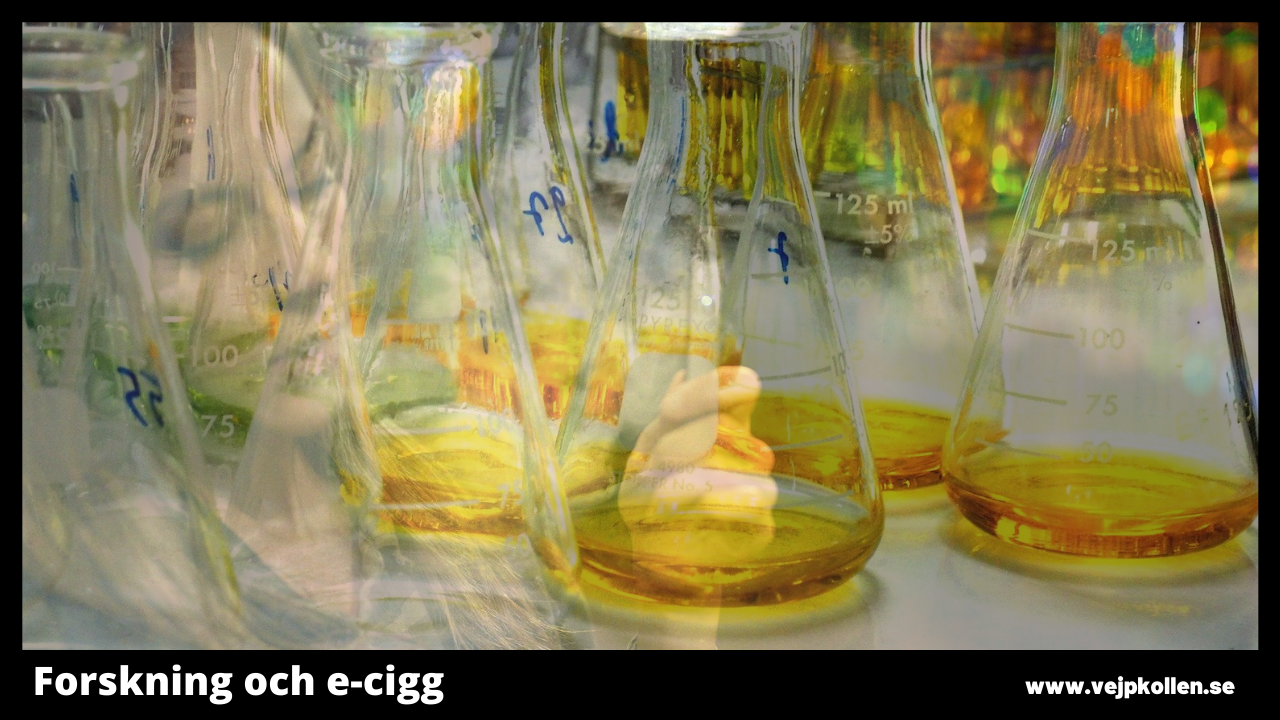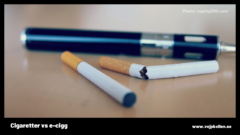E-cigarettes produce far fewer hazardous substances than cigarettes. But those that are produced are influenced by factors such as power, flavourings and the design of the burner.
This is according to a new US study.
The vapour from an e-cigarette contains between 125 and 10,000 times lower concentrations of carcinogenic aldehydes than the smoke from a cigarette. This is according to researchers from Rutgers University in the United States, in a study on the different health risks of electronic cigarettes. At the same time, concentration is highly dependent on how the coil handles e-juice and heat.
E-cigarettes under real-life conditions
The research builds on previous studies, supplemented by 23 test participants who were allowed to use two different e-cigarettes, with different flavours and effects, but with the same coil (0.8 ohm bottom-fed vaporiser between 6 and 30 watts).
"The tests were conducted in the same way as e-cigarettes are used in everyday life, with different puffing patterns and time intervals. Several previous studies have not taken sufficient account of real-world conditions, and this is important for understanding the real risks," the researchers write.
Avoid burning the wicks
Previous tests have shown the coil's ability to transport e-liquid, plays a major role in the formation of aldehydes. An older type of coil, small top-fed vaporisers where the wick material absorbs e-juice from below, does not transport the e-juice fast enough, the researchers say. When the liquid is vaporised quickly, at higher powers, the risk of the material drying and glowing increases. A so-called "dry hit" occurs. Something that most road users note by a strong burning taste and pain in the throat. In such cases the amount of aldehydes increases significantly.
But this does not reflect "normal" conditions, the researchers say, as users do not usually use a coil that tastes burnt.
Modern coils are safer
In their tests, they instead used more modern burners, where the wetting takes place from the bottom of the coil. These proved to handle the heat much better. No matter what temperature the researchers exposed the coils to, they consistently produced far fewer aldehydes than can be measured in cigarette smoke.
"At the same time, the results show that the concentration of aldehydes increases with the effect, although they remain far below the concentration in cigarette smoke," the researchers write.
Different flavours affect the risks
The researchers also compared different flavours in the e-juice. All the flavours tested came from the essence company The Perfumer's Apprentice (TPA). It turned out that flavours such as strawberry (strawberry) and dragon fruit (dragonfruit) tended to form more formaldehyde than creamy flavours (such as bavarian cream and sweet cream). Menthol was in the centre along with gum and cinnamon.
No risk of popcorn lung
The researchers also measured the amount of diacetyl (a butter flavour) in the various flavours, in particular bavarian cream and sweet cream. Diacetyl has been at the centre of the debate on e-cigarettes. The substance has properties that can cause so-called "popcorn lung".. However, the disease, which is similar to COPD, has never been found in either road users or smokers. This is despite the fact that cigarette smoke contains a very high concentration of diacetyl.
"Although several e-juice manufacturers have replaced diacetyl with other butter flavours, these can also form diacetyl when heated," the researchers write.
But even here they only found smaller concentrations, far below the levels associated with absolute health risks.
PG worse than VG
Finally, the researchers measured the difference between propylene glycol and vegetable glycerine, which makes up 99 per cent of the e-juice. Glycerine begins to degrade and form aldehydes at 200 degrees centigrade. Propylene glycol, on the other hand, starts to react at 127 degrees, which affects the risk of higher concentrations of aldehydes earlier.
"E-juices with high PG content can produce up to 200 times more aldehydes than juices with higher VG content. This was constant regardless of effect," the researchers write.
Want to regulate power and content
According to the researchers, legislators should look more at studies where e-cigarettes are studied. under real conditions. And that governments should focus on the effect of certain devices, but also the PG content of certain e-juices. They also note that e-cigarettes have a significant impact on the health of smokers. They have a clear harm reduction effect.
"At the same time, road users should be aware that the harm reduction effect varies depending on how they use the products, the type of coil they use and what is in the e-juice. Some substances may have effects even at low levels," the researchers write.
"Ignorance among legislators"
Niklas Linder, Chairman of the Swedish Trade association for electronic cigarettes, BELC welcomes the message.
'It is positive news that all types of modern e-cigarettes are significantly healthier than traditional tobacco smoking. That said, there are different levels of risk even within the e-cigarette range. But the research shows that the absolute best thing for nicotine addicts who use e-cigarettes is to have a modern e-cigarette with a focus on more nicotine in the liquid and less power in the device," says Mr Perez. Niklas Linder.
It is a message that he hopes will influence politicians legislating on e-cigarettes in the future.
"We unfortunately see a lot of ignorance from legislators; today, the state penalises nicotine, which is probably the most studied and proven least dangerous component of the equation. We also have severe restrictions on the nicotine content, 20mg/ml. This makes products that can provide users with enough nicotine at lower effects less attractive. In order for the user to get a reasonable dose of nicotine, we instead use more powerful devices, which deliver much more vapour, thus increasing the risks to health," he says. Niklas Linder, BELC.




